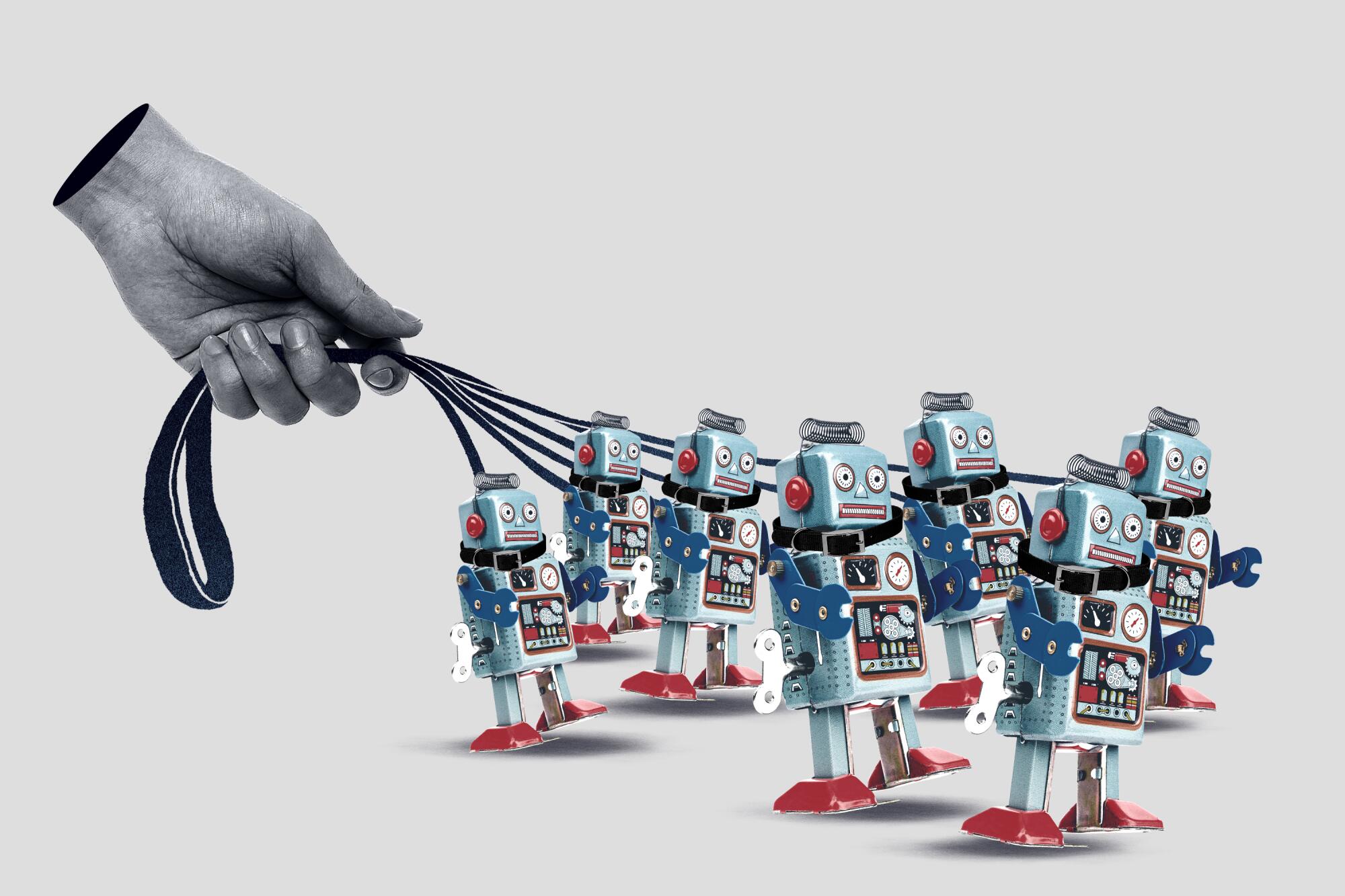[ad_1]

Blackrock Neurotech, a medtech company based in Salt Lake City, has pioneered an array of brain-computer interface technologies. Medgadget last spoke with Blackrock Neurotech a year ago about their thought-to-text brain computer interface, but since the company signed an agreement with a research institution to develop portable brain computer interface (BCI) systems. This partnership will hopefully lead to patients being able to use BCI devices in the comfort of their own home.
At present, such technology currently uses bulky and cumbersome hardware, and therefore requires physical visits to research facilities for people who wish to participate in trials of BCI systems. This limits who can participate in such trials based on their geographical proximity to such a research facility. The plan with this new system is to let a greater variety of people to avail of the technology, and pave the way for a day where such systems are more commonplace and are used as routine assistive technologies for those with paralysis.
Medgadget had an opportunity to speak again with Florian Solzbacher, Ph.D., Co-Founder & Chairman of Blackrock Neurotech and Professor and Chair at the Department of Electrical and Computer Engineering at University of Utah, about the company’s latest technology.
Conn Hastings, Medgadget: Please give us a brief overview of BCIs and how they are used at present.

Florian Solzbacher, Blackrock Neurotech: Brain-computer interfaces (BCIs) are devices that measure signals from the (human) brain to control external devices such as computers or prosthetics through thoughts and that at times can also send signals to the brain to convey information such as e.g. invoking a sense of touch, hearing, seeing, etc. One way of categorizing BCIs is to divide devices into medical (i.e. helping to restore lost function) and non-medical (consumer) BCIs and into implantable and non-implantable BCIs. Implantable BCIs are so far only represented in medical applications and tend to have far better functional performance, due to the higher resolution and information content of the data obtained from listening to individual neuron action potentials and local field potentials with the implantable devices, compared to external/non-implantable devices which have to rely on conventional decades old EEG technology that only obtains the slower signals averaged from millions of neurons from a distance that contain less information.
These BCI systems, comprised of miniaturized electronics, hardware, and machine learning software, decode and translate brain signals into digital commands, enabling people to control external devices such as computer cursors or robotic arms.
Blackrock’s BCI has been shown in research settings to restore motor and sensory function and communication in patients with a wide range of neurological disorders and injuries including stroke, paralysis, ALS, limb disarticulation (loss) and is currently in development and testing for blindness, hearing loss and other limitations.

While our BCI has until now only been available to patients through research studies, we believe the technology is ready for real-world use and have plans to submit MoveAgain, our first commercial BCI device, to the FDA in 2022.
Medgadget: What has hampered the development of portable systems to date?
Florian Solzbacher: There are technical challenges that have hampered the development of portable systems–namely that BCI systems need to be able to record and process a great deal of data very quickly. This typically translates into significant computing power and consequently, large power consumption and heat generation, which are at odds with the criteria of portable systems.
In order to create a viable portable system, we’ve approached it from both the hardware side, through the creation of miniaturized low-power designs and custom microchips that allow lower power consumption when acquiring or processing neural data, and on the software side, with efficient algorithms.
In addition to these technical challenges, there are the challenges that come with commercializing any novel technology–starting with a deep understanding of the actual customer and market needs and opportunities, creating pathways to getting the products to customers, understanding how the product will be paid for and high initial investment in hardware and software development, market development, etc.
Blackrock is at the leading edge of tackling these challenges as we endeavor to create the first commercial BCI product.
Medgadget: What challenges do you envisage in making the technology portable? Will this require miniaturization of existing components?
Florian Solzbacher: The largest technical challenge is the tradeoff in computational performance versus battery life, power consumption, and heat dissipation. It’s similar to the tradeoff between desktop and laptop computers, though on a larger, more complex scale.
In terms of miniaturization, many components in Blackrock’s MoveAgain system have already been reduced in size to the level of a portable system (i.e., attached to a power wheelchair), but there will be continuous improvements and refinements over time.
Finally, developing a quality user experience is fundamental to creating a portable system. Outside of the lab, how will patients interact with the device? In consultation with people who’ve used our BCI, Blackrock is engaged in a careful, user-focused design process to ensure a device that is easy to operate by both users and caregivers and provides the critical value that they are looking for.
Medgadget: Will the portable system allow a user to only interface with a computer in their immediate vicinity, or will they also be able to interact with remote systems?
Florian Solzbacher: The portable system will allow the user to interact with systems, both local and remote, that are connected to the BCI device.
In order to connect a computing device to the BCI system, the user must initiate the connection on the BCI side and approve the connection on the computer side, much like you would need to pair a set of Bluetooth headphones to a computer. Once connected to a computing device, the user is able to perform any function they desire with that device. This could include connecting to remote computers using Remote Desktop for the user’s job, for example.
Medgadget: Will the portable system require a technician or clinical staff to assist the user, or will a caregiver be able to assist?
Florian Solzbacher: We are designing the MoveAgain system to be fully operated by the user and their caregiver once it is implanted and programmed. Like other types of medical devices implanted in the brain (for example, deep brain stimulation), we expect that when first implanted, the user will work with neurologists and occupational therapists to develop the mental strategies and device settings that allow them to accomplish the tasks they want to perform. After this process, we expect the MoveAgain system to be operational independent of clinical or technical intervention. However, we are also building all of the technical and customer support that might be expected with a new type of medical device, so that if the caregiver or user experience issues, help is close at hand.
Medgadget: Do you see this research as paving the way for BCI systems that fully empower users to use them anywhere? Presumably this is the ultimate end-goal for such systems?
Florian Solzbacher: Our vision for this technology is that it is widely available to patient populations who need them, and that it addresses–in a meaningful manner–questions of restoration of function, increased independence, and improved quality of life, including the ability to return to work.
The development of in-home systems is certainly a step in that direction–to take what has been possible in the lab and bring it into the real world for patients.
Medgadget: What are the next steps for BCI technology? Do you think that a commercial system could be available relatively soon?
Florian Solzbacher: We anticipate submitting our first commercial platform, MoveAgain, to the FDA in 2022.
Miniaturization of our technology will continue, as will the refinement of algorithms and frontend software, while we work on increasing functional capabilities for areas such as depression and the treatment of pain. Surgical procedures will also become less invasive (depending on use case), more efficient and automated. We’ll see more clinical centers offer these solutions and health insurance develop standards around reimbursements. All of these milestones lead to our ultimate goal of bringing this technology out of the lab and into day-to-day life for patients.
Long-term, we anticipate that our neural implants could be as accessible to individuals with neurological disorders as pacemakers are today.

Here’s a short video showing some of the capabilities of Blackrock’s technology:
Link: Blackrock Neurotech…
[ad_2]
Source link







